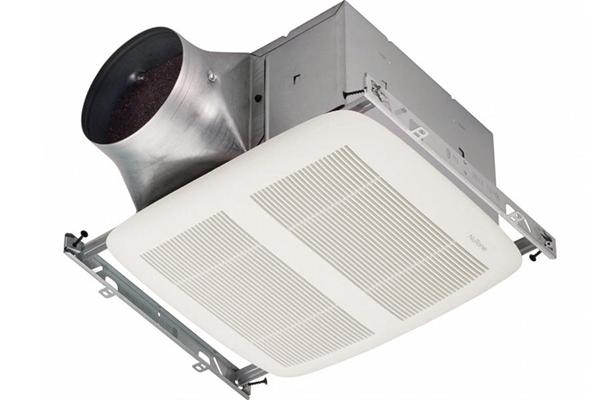

Bathroom fans are a necessity in today’s air tight and energy efficient homes and help mitigate bathroom humidity issues. Ventilating the pollutants from cooking and showering is vital to the health of the residents and to the structural integrity of the home.
Bathroom Humidity Issues
When humidity builds up in a bathroom that doesn’t have proper ventilation, warm moisture-laden air moves toward cooler surfaces, such as the walls, where it condenses back into water.
Moisture vapor can peel wallpaper or paint off the surfaces and encourage the growth of mildew and mold. Moist air can condense inside the wall cavity, where it can cause rot, mold and serious structural damage to wall studs, sheathing, and ceiling and floor joists above and around the bathroom.
Bathroom Mold
Mold in the bathroom is especially problematic and has become a huge concern for today’s builders. Mold is a fungus that thrives in warm, dark, humid environments. It spreads via spores that grow on wet or moist surfaces such as wood, wallboard, and bathroom tile.
The only effective way to prevent mold is to attempt to keep indoor moisture levels low. Mildew is simply a type of mold that spreads particularly well in organic, moisture-rich environments.
A bathroom fan collects the bathroom’s moist air and immediately expels it outdoors, through duct work in the walls or ceiling. Most times people use the fan during the shower but immediately turn it off after they are done showering which does not resolve bathroom humidity issues.
Best Practice For Bathroom Humidity Issues
Ventilate and control all fans with timer switches. I feel that the best all-around and most cost-effective way to remove humid air from showering is to replace your light / fan switch with an automatic timer switch. The fan goes on when you set the timer, then shuts off when the time runs out.
Image: RD.com
Using a timer switch allows you to remove humidity for up to 30 minutes after you leave the room, without the worry of forgetting to turn the fan off.
Don’t have a bathroom fan? Get one installed and read Bathroom Duct Venting Options,” and “Installing A Bathroom Vent Duct.”
Ventilation Rule Of Thumb
A good rule of thumb, according to the Home Ventilating Institute, is to run your fan for 20 minutes following bathroom shower use. The use of the an and timer switch will work as a team to eliminate bathroom humidity issues.
~ concord carpenter

